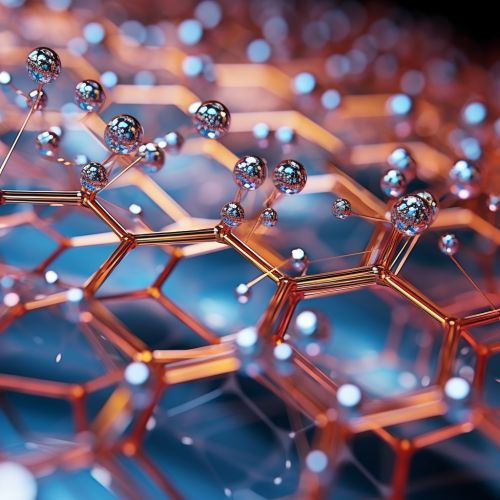Nanotechnology in Materials Science
Introduction
Nanotechnology, a field of research and innovation concerned with building 'things' - generally, materials and devices - on the scale of atoms and molecules, has been hailed as having the potential to revolutionize many areas of science and technology. In particular, the application of nanotechnology in the field of materials science has opened up new avenues for the development of advanced materials with enhanced properties and functionalities. This article explores the role and impact of nanotechnology in materials science, delving into the principles, techniques, applications, and future prospects of this exciting interdisciplinary field.
Principles of Nanotechnology
Nanotechnology operates at the nanometer scale, which is typically defined as 1 to 100 nanometers. A nanometer is one billionth of a meter, or about 100,000 times smaller than the diameter of a human hair. At this scale, the physical, chemical, and biological properties of materials differ in fundamental and valuable ways from the properties of individual atoms and molecules or bulk matter. These unique properties are largely due to the increased relative surface area and quantum effects that become significant at this scale.
Techniques in Nanotechnology
There are two basic approaches to creating nanoscale materials and devices: top-down and bottom-up. The top-down approach involves reducing the size of larger materials to the nanoscale, while the bottom-up approach involves assembling atoms or molecules into nanoscale structures. Techniques such as lithography, etching, and milling are used in the top-down approach, while chemical synthesis, self-assembly, and positional assembly are used in the bottom-up approach.
Nanotechnology in Materials Science
Materials science is an interdisciplinary field involving the properties of matter and its applications to various areas of science and engineering. It includes elements of applied physics and chemistry, as well as chemical, mechanical, civil, and electrical engineering. With the advent of nanotechnology, materials science has been propelled to the forefront of research and development in various fields, from electronics and photonics to medicine and environmental protection.


Nanomaterials
Nanomaterials, materials with at least one dimension in the nanoscale range, exhibit unique properties compared to their bulk counterparts. These properties can include increased strength, lighter weight, enhanced chemical reactivity, and improved electrical conductivity. Nanomaterials can be classified into zero-dimensional (nanoparticles), one-dimensional (nanotubes and nanowires), two-dimensional (thin films and surface coatings), and three-dimensional (bulk nanomaterials) structures.
Nanocomposites
Nanocomposites are multi-phase solid materials where one of the phases has one, two or three dimensions of less than 100 nanometers. They are often used to improve the mechanical, thermal, barrier and durability properties of materials. Nanocomposites can be composed of a variety of materials, including metals, ceramics, and polymers.
Nanostructured Surfaces
Nanostructured surfaces, or surfaces engineered at the nanoscale, can have tailored properties such as superhydrophobicity, self-cleaning, anti-reflectivity, enhanced catalytic activity, and improved adhesion. These surfaces have a wide range of applications, from self-cleaning windows and anti-fogging coatings to medical implants and solar cells.
Applications of Nanotechnology in Materials Science
Nanotechnology has found widespread application in various fields of materials science, including electronics, energy, healthcare, and environmental protection.
Electronics
In electronics, nanotechnology has been used to create smaller, faster, and more powerful microprocessors and memory devices. For example, the use of silicon-germanium nanowires in transistors has allowed for the development of electronic devices with faster switching speeds and lower power consumption.
Energy
In the energy sector, nanotechnology has been used to develop more efficient and cost-effective solar cells, fuel cells, and batteries. For instance, the use of quantum dots in solar cells has resulted in increased efficiency by allowing for the absorption of a wider spectrum of light.
Healthcare
In healthcare, nanotechnology has been used in drug delivery systems, diagnostic tools, and tissue engineering. For example, nanoparticles can be engineered to target specific cells or tissues in the body, improving the efficacy and reducing the side effects of drugs.
Environmental Protection
In environmental protection, nanotechnology has been used in water purification, air quality improvement, and waste management. For example, nanoscale iron particles have been used to remediate groundwater contaminated with chlorinated organic compounds.
Future Prospects
The future of nanotechnology in materials science looks promising, with ongoing research and development in various fields. Potential areas of growth include the development of nanoscale sensors and actuators, advanced energy storage and conversion devices, and smart materials that can adapt to their environment. However, there are also challenges to be addressed, including the need for more efficient and scalable manufacturing processes, the understanding and mitigation of potential environmental and health risks, and the establishment of regulatory frameworks for the safe and ethical use of nanotechnology.
